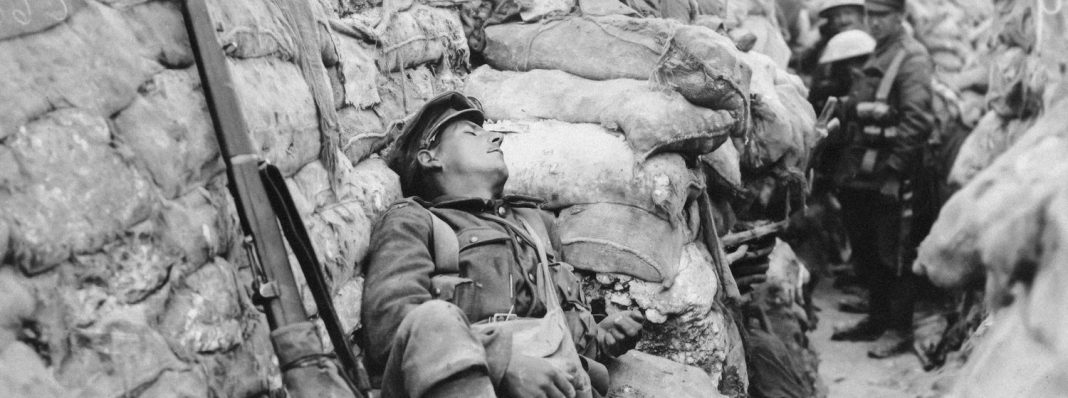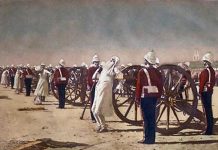Notes:
[1] Ben Hall, ‘’Military Briefing: Ukraine’s Battlefield Agility Pays Off’’, Financial Times, May 26, 2022; ‘’What Is Mission Command? Democracy and Freedom Can Play a Role in Military Effectiveness’’, The Economist, July 25, 2022; Mick Ryan, ‘’A Tale of Three Generals — How the Ukrainian Military Turned the Tide’’, Engelsberg Ideas, October 14, 2022.
[2] Karl Mavrikievitch Woide, Die Selbständigkeit der Unterführer im Kriege (Berlin: R. Eisenschmidt, 1895).
[3] Charles De Woyde, De l’Initiative des chefs en sous-ordre à la guerre (Paris: L. Baudoin, 1895).
[4] Richard C. Hall, The Balkan Wars 1912-1913: Prelude to the First World War (London: Routledge, 2000), 83-5.
[5] Ibid, 121-22.
[6] Woide, Die Ursachen der Siege und Niederlagen im Kriege 1870 (Berlin: Mittler & Sohn, 1894-1896) and in French, De Woyde, Causes des Succès et des Revers dans la Guerre de 1870 (Paris: L. Baudoin, 1899-1900).
[7] Woide, Die Ursachen, Ι, 5.
[8] Woide, Die Ursachen, ΙΙ, 428.
[9] Robert Citino, The German Way of War: From the Thirty Years’ War to the Third Reich (Lawrence, KS: University Press of Kansas, 2005), 308-10.
[10] Voide, Die Selbständigkeit, 5.
[11] David Barno and Nora Bensahel, ‘’Three Things the Army Chief of Staff Wants You to Know’’, War on the Rocks, May 23, 2017, https://warontherocks.com/2017/05/three-things-the-army-chief-of-staff-wants-you-to-know/.
[12] Voide, Die Selbständigkeit, 122.
[13] Stephan Leistenschneider, Auftragstaktik im preußisch-deutschen Heer 1871 bis 1914 (Hamburg: Mittler & Sohn, 2002).
[14] Marco Sigg, Der Unterführer als Feldherr im Taschenformat: Theorie und Praxis der Auftragstaktik im deutschen Heer 1869 bis 1945, (Paderborn: Ferdinand Schoningh, 2014), 220-21.
[15] Olaf Rose, Carl von Clausewitz: Zur Wirkungsgeschichte seines Werkes in Rußland und der Sowjetunion 1836-1991 (Munich: Oldenbourg, 1995), 61.
[16] Alexander Solzhenitsyn, August 1914 (New York, NY: Farrar, Straus and Giroux, 1972), 124. See also Christian E.O. Millotat, ‘’Die Schlacht von Tannenberg im Spiegel des literarischen Meisterwerks von Alexander I. Solschenizyn – August 1914, Das Rote Rad, Erster Knoten,’’ Military Power Revue der Schweizer Armee, no. 2 (December 2014): 38-48.
[17] For example Michael Eisenstadt and Kenneth M. Pollack “Armies of Snow and Armies of Sand: The Impact of Soviet Military Doctrine on Arab Militaries,” in The Diffusion of Military Technology and Ideas, ed. Emily O. Goldman and Leslie C. Eliason (Stanford, CA: Stanford University Press, 2003), 68-70.
[18] David Barno and Nora Bensahel, Adaptation under Fire: How Militaries Change in Wartime (New York, NY: Oxford University Press, 2020), 265-68.
[19] North Atlantic Treaty Organization, Allied Joint Publication-3 (AJP-3), Allied Joint Doctrine for the Conduct of Operations (NATO Standardization Office, 2019).
[20] Robert Leonhard, The Art of Maneuver: Maneuver Warfare Theory and Airland Battle (Novato, CA: Presidio Press, 1994), 52-8.
[21] Citino, The German Way of War, 310.
[22] Martin van Creveld, ‘’On Learning from the Wehrmacht and Other Things’’, Military Review, Vol. 68, no 1 (January 1988): 70-1; Stephen Bungay, The Art of Action: How Leaders Close the Gaps between Plans, Actions, and Results (London: Nicholas Brealey Publishing, 2011), 76-82.
[23] Eitan Shamir, Transforming Command: The Pursuit of Mission Command in the U.S., British and Israeli Armies, (Stanford, CA: Stanford University Press, 2011), 6-7.
[24] Conrad Crane, ‘’Mission Command and Multi-Domain Battle Don’t Mix’’, War on the Rocks, August 23, 2017. https://warontherocks.com/2017/08/mission-command-and-multi-domain-battle-dont-mix/; Amos C. Fox, ‘’Cutting Our Feet to Fit the Shoes: An Analysis of Mission Command in the U.S. Army’’, Military Review, Vol. 97, no 1 (January-February 2017): 49-57.
[25] Martin Samuels, “Understanding Command Approaches”, The Journal of Military Operations, Vol. 1, no. 3 (Winter 2012): 25-29.










